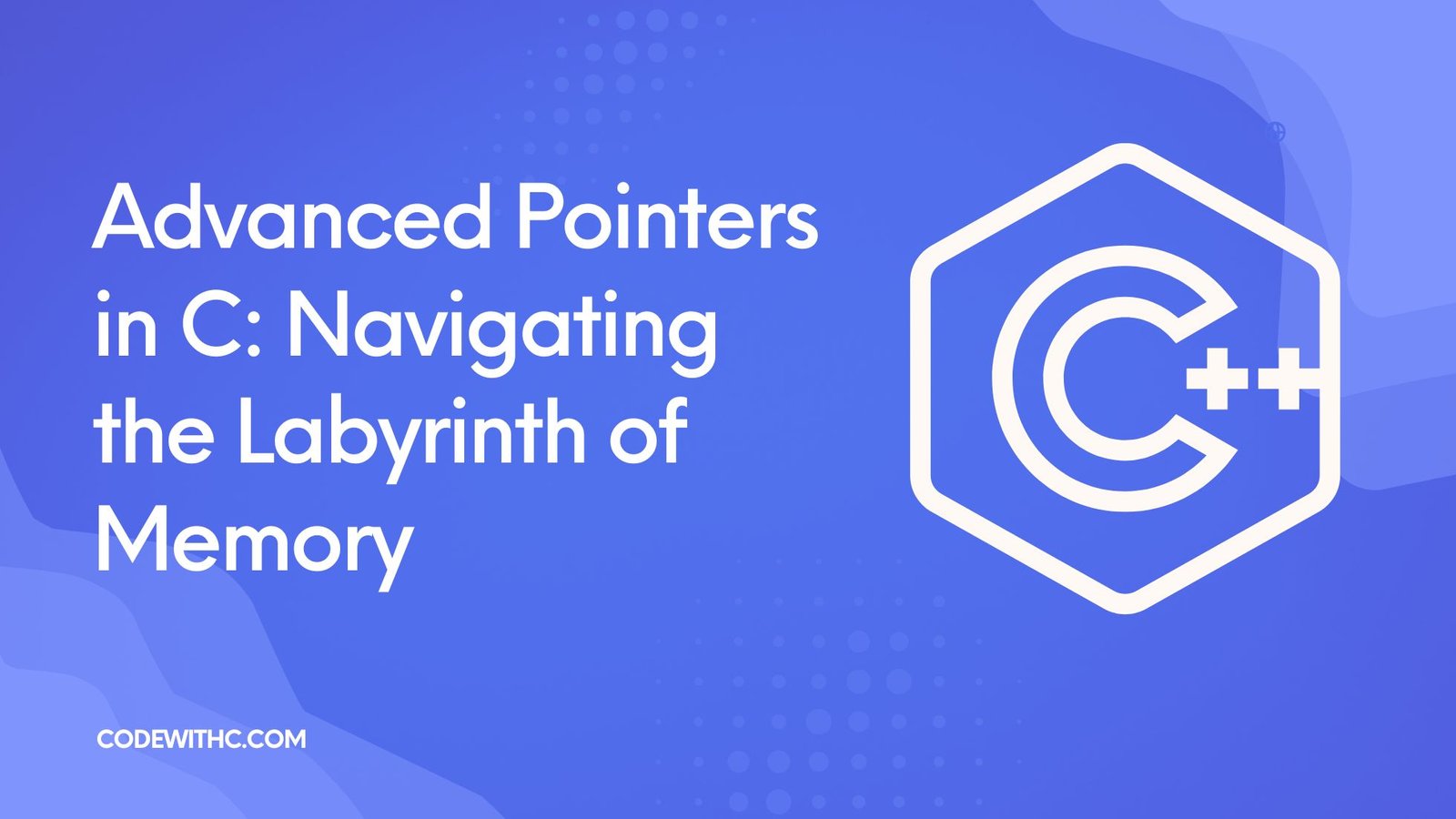Ahoy, fellow code enthusiasts! ? Pointers in C Navigating the Labyrinth of Memory can be likened to a double-edged sword. While they’re incredibly powerful, they can be equally perplexing. Today, we’re venturing beyond the basics, delving into the world of advanced pointers. Trust me; by the end of this, you’ll view pointers in a whole new light. Let’s dive in!
Pointers Beyond the Basics
We’ve all had our fair share of int *p = &x;. But the world of pointers stretches far beyond simple variable referencing. They can point to arrays, functions, and even other pointers! It’s like a web of interconnected memory locations, and navigating through this web requires finesse and understanding.
Pointers to Pointers: A Dimension Above
Imagine having a pointer that points to another pointer. Mind-bending, right?
The Syntax
The syntax for declaring a pointer to a pointer is simple:
int **pp;
Here, pp is a pointer to a pointer of type int.
Practical Application
Let’s take a look at a real-world example to understand this concept better:
#include <stdio.h>
int main() {
int x = 10;
int *p = &x;
int **pp = &p;
printf("Value of x: %d\\n", **pp);
return 0;
}
In this snippet, p points to x, and pp points to p. Thus, using **pp, we can directly access the value of x.
Pointers to Arrays: The Power of Dynamic Data Structures
Arrays are a contiguous block of memory. And with pointers, we can dynamically allocate and manage these blocks, leading to data structures like linked lists and dynamic arrays.
A Glimpse into Dynamic Arrays
Consider a scenario where you need an array, but you’re unsure about its size until runtime. Enter dynamic memory allocation:
int *arr = (int *)malloc(n * sizeof(int));
Here, arr acts as a pointer to the first element of a dynamically allocated block of n integers.
Pointers and Strings: A Match Made in Memory
In C, strings are nothing but arrays of characters. Using pointers, we can create and manipulate these strings with greater efficiency.
char *str = "Hello, World!";
Here, str is a pointer to the first character of the string. This method of string initialization is memory efficient, as it avoids reserving extra space.
Wrapping Up: The Symphony of Advanced Pointers
Navigating the realm of advanced pointers is like mastering a musical instrument. It’s challenging, no doubt, but the melodies you can create are limitless. With pointers, you’re not just accessing memory; you’re orchestrating a symphony of data structures, algorithms, and memory management techniques.
Whether you’re crafting intricate algorithms, developing vast software systems, or just looking to deepen your understanding of C, advanced pointers are your allies. Embrace them, understand them, and let them elevate your coding prowess to new heights!






